There are a lot of things that can go wrong with your zipper. It might get stuck, it might break, or it might simply stop working the way it’s supposed to. One of the most common problems with zippers is water damage. If you live in a rainy area, or if you’re just constantly getting caught in the rain, then your zipper is probably taking a beating. In this blog post, we’re going to teach you how to waterproof your zipper!
Are Zippers Waterproof?
No, typically zippers are not waterproof. However, there are ways to waterproof a zipper so that it becomes more resistant to water. By following a few simple steps, you can make your zipper last longer and keep your belongings dry. [1]
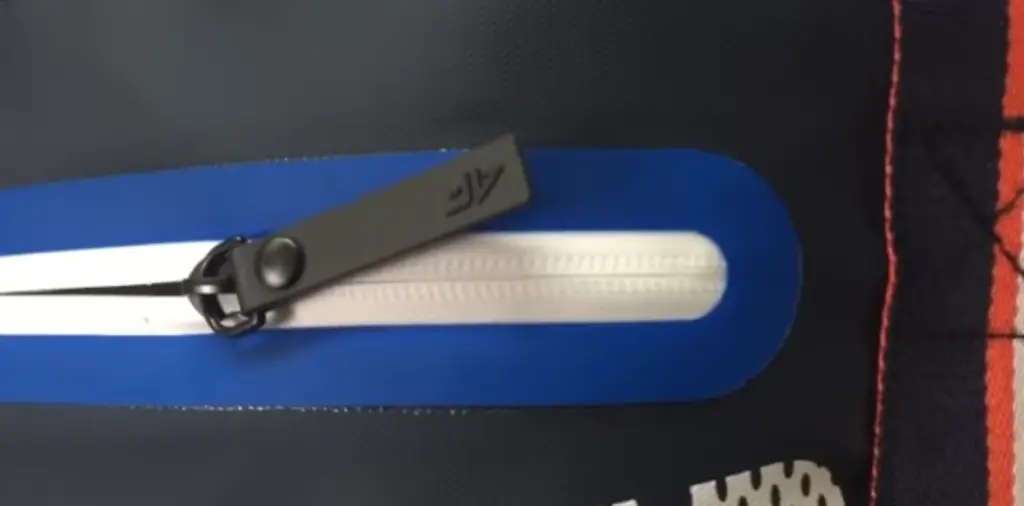
Why Should You Waterproof Zippers?
They help keep you dry and comfortable in wet weather and prevent water damage to your belongings.
How to Waterproof Zippers?
Use Wax
The easiest way to waterproof a zipper is to use wax. All you need is a candle or beeswax, and a lint-free cloth. First, hold the candle close to the teeth of the zipper and run it back and forth until the teeth are coated with wax. Be sure to get both sides of the zipper. Next, use the cloth to buff the wax into the teeth so that it’s evenly distributed. You can also use your fingers to do this.
Use A Zip Covering
If you don’t have a zip cover or storm flap, you can make your own by cutting a slit in a piece of fabric and attaching it to the zipper with Velcro. This will help keep water from seeping through the teeth of the zipper. [2]
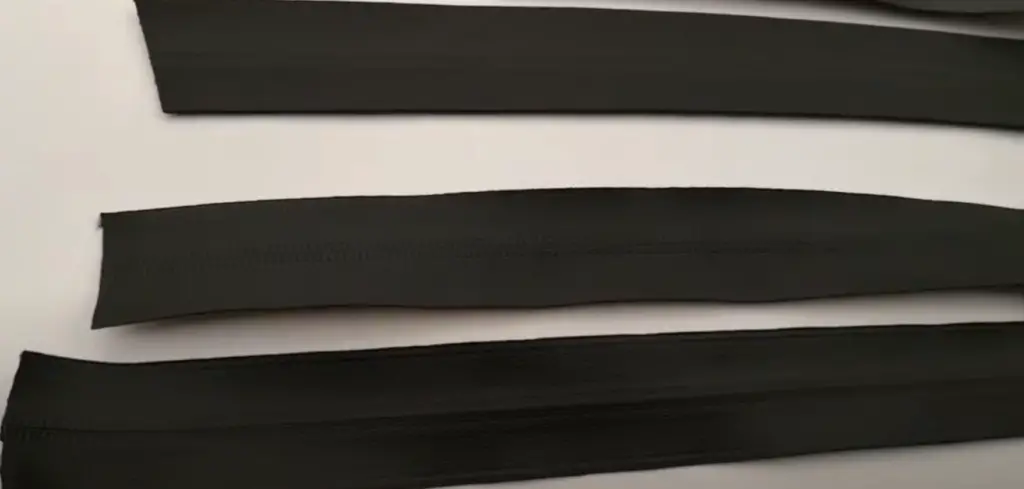
Install Waterproof Zipper Tape
To install waterproof zipper tape, start by aligning the edge of the tape with the teeth of the zipper. Apply pressure to the tape as you smooth it down, being careful not to catch any fabric in between. Once the first side is complete, repeat on the other side. For best results, use a seam sealer or adhesive designed specifically for waterproofing zippers. With your newly installed waterproof zipper tape, your garment will be better equipped to withstand even the heaviest downpours. But remember, no matter how well you waterproof your gear, it’s always a good idea to pack a backup just in case!
Use Spray Water Repellant
One way to waterproof your zipper is to use a spray water repellant. This will create a barrier between the water and the fabric, which will help keep your zipper dry. Be sure to follow the directions on the repellant carefully, as some fabrics may be damaged by the chemicals in the spray. Another option is to purchase a waterproofing agent specifically designed for zippers. These products usually come in a small bottle with a brush attached, making it easy to apply evenly over the entire length of the zipper. Once applied, these agents will need to be heat-sealed into place using an iron or hair dryer; otherwise, they will eventually wash away. Either method, it is important to test your zipper in a small inconspicuous area before applying the waterproofing agent to the entire piece. [3]
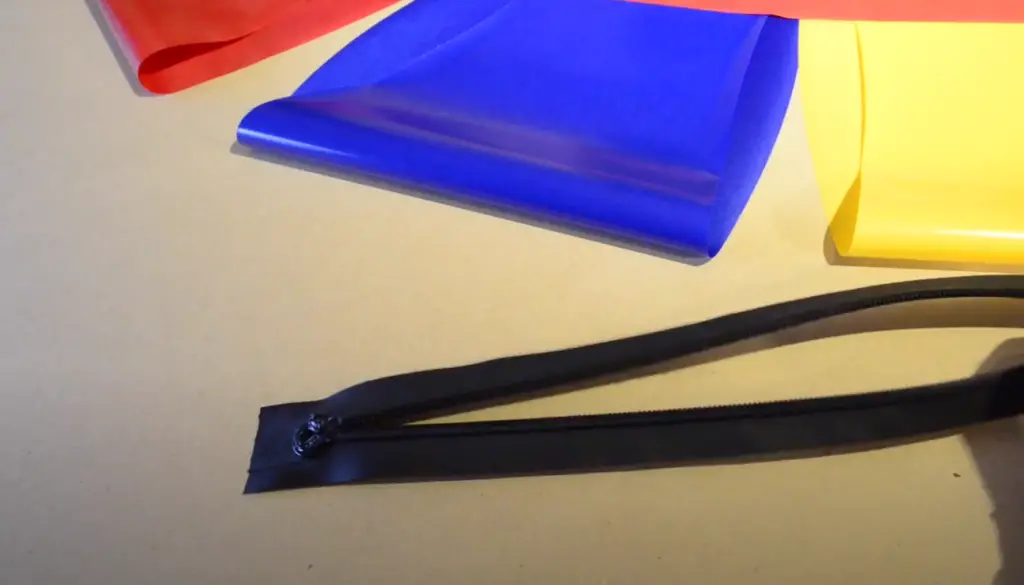
Buy a Waterproof Zipper
If you don’t have a waterproof zipper, you can buy one. They are not expensive, and they will save you a lot of time and money in the long run.
Classification Of Waterproof Zips
There are three types of waterproof zippers, each with their own benefits and drawbacks.
- Taped: A taped zipper is the most common type of waterproof zipper. It features a strip of water-resistant tape that covers the teeth of the zipper, making it impervious to water. Taped zippers are typically used in outdoor gear and clothing, as they provide excellent protection against the elements. However, taped zippers can be difficult to operate and are not as strong as other types of waterproof zippers.
- Coil: A coil zipper is made from a series of interlocking coils that are coated with a water-resistant material. Coil zippers are stronger than taped zippers and can be easier to operate, but they are not as water-resistant.
- Molded Tooth: A molded tooth zipper is made from a series of plastic teeth that are molded into a water-resistant material. Molded tooth zippers are the strongest and most water-resistant type of waterproof zipper, but they can be difficult to operate. [4]
What Are Waterproof Zippers Made Of?
Waterproof zippers are made from a variety of materials, but the most common is PVC. This type of zipper is often used in marine applications because it can withstand salt water and humidity. Other materials used to make waterproof zippers include neoprene, polyurethane, and rubber. These materials are often used in outdoor gear, such as jackets and sleeping bags.
How Do Waterproof Zippers Work?
This barrier prevents water from seeping through the teeth and into the garment. Waterproof zippers are usually coated with a waterproof material, such as PVC or polyurethane. The coating helps to create a water-resistant barrier that is less likely to leak.
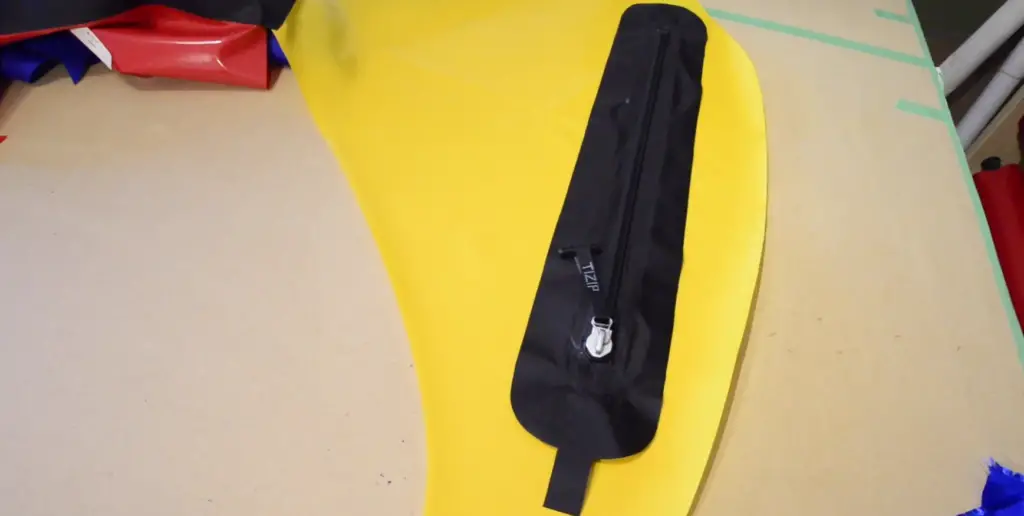
Are Waterproof Zippers Durable?
Waterproof zippers are designed to be durable and long lasting. They can withstand repeated use and washings without losing their waterproof properties. However, it is important to note that waterproof zippers are not indestructible.
Water-resistant vs. Waterproof Zipper: What’s the Difference?
Water-resistant and waterproof are not the same thing, and it’s important to know the difference when choosing a zipper for your project. Water-resistant means that the fabric will resist water penetration, but is not completely impermeable. Waterproof means that the fabric is impermeable to water, meaning no water will penetrate at all.
So, how do you choose which one you need? If your project will be exposed to any amount of moisture, even just dampness in the air, you’ll want to use a waterproof zipper. If you’re only worried about occasional splashes or light rain, a water-resistant zipper will suffice. [5]
Things to Consider When Buying Waterproof Zippers
When shopping for waterproof zippers, it is important to consider the type of fabric the zipper will be used on. For example, a nylon or polyester zipper will work well on a raincoat, but may not be as durable on a pair of pants made from denim or canvas.

It is also important to consider the size of the zipper. A small zipper may not be able to withstand the pressure of a large wave, while a large zipper may be too bulky for a small child’s coat. Waterproof zippers are also available in different colors, so it is possible to match thezip to the fabric of the garment.
Some manufacturers offer lifetime warranties, while others only cover defects for a certain period of time. Checking the warranty will ensure that the customer is covered in case of any problems.
FAQ
What is a water repellent zipper?
A water repellent zipper is a type of zipper that has been treated with a water-repellent coating. This treatment helps to keep the fabric around the zipper dry and prevents the zipper from rusting.
How do I waterproof my zipper?
There are several ways you can waterproof your zipper. You can use a water repellent spray, wax, or silicone sealant. You can also purchase pre-treated zippers that have already been treated with a water repellent coating.
What are the benefits of waterproofing my zipper?
Waterproofing your zipper will help to keep your belongings dry and protected from the elements. It will also help to prolong the life of your zip by preventing rust and corrosion.
How often should I waterproof my zipper?
You should waterproof your zipper every few months, or as needed. You may need to waterproof your zipper more often if you live in a wet or humid climate.
What are some tips for waterproofing my zipper?
First, consider the type of zipper you have. There are two main types of zippers-coil and metal. Coil zippers are made of plastic teeth on a fabric tape, while metal zippers have interlocking metal teeth. If you have a coil zipper, you’ll need to be extra careful when waterproofing it.
Second, clean your zipper before waterproofing it. This will help ensure that the waterproofing treatment will adhere properly.
Third, apply a silicone-based water repellent to your zipper. Start at the top of the zipper and work your way down, making sure to evenly coat all of the teeth. You can also use a spray-on water repellent for this step.
Fourth, allow the repellent to dry completely before using your zipper. This usually takes about 24 hours.
Finally, test your zipper to see if it’s waterproofed properly. Try running some water over it and seeing if any leaks through. You can also try submerging the zipper in a bowl of water to see if it stays dry. If it does leak, you’ll need to reapply the repellent and allow it to dry again.
By following these steps, you can easily waterproof your zipper and keep it functioning properly for years to come!
How do you sew a waterproof zipper?
This is a common question with a few different answers. Some people swear by using beeswax, others by paraffin wax, and still others by special purpose waterproofing sprays or liquids. The most important thing to remember when waterproofing a zipper is that you need to make sure the teeth of the zipper are well-coated. The inside of the fabric placket can also be treated for extra protection. Once you’ve decided on your method, simply follow the instructions below for how to waterproof a zipper.
Are YKK zippers waterproof?
No, YKK zippers are not waterproof. However, you can waterproof them using a water-resistant treatment. There are several ways to do this, but the most common is to use a spray-on water repellent or a beeswax treatment. You can also buy water-resistant zippers from some manufacturers.
Can water pass through a zipper?
This is a question we get a lot, and the answer is… it depends! It really depends on the type of zipper you have, and how you treat it. There are two main types of zippers: coil zippers and tooth zippers. Coil zippers are made with interlocking spirals of metal or plastic, while tooth zippers have individual teeth that mesh together. Tooth zippers are more common in outdoor gear because they’re less likely to jam or break than coil zippers.
To waterproof a zipper, you’ll need to treat it with a water-repellent treatment. There are a few different ways to do this, but the most common is to use a silicon-based waterproofing spray. You can also use a beeswax treatment, which will not only waterproof your zipper, but also lubricate it and make it easier to zip up and down.
Another option is to use a paraffin wax, which will waterproof your zipper without making it too slippery. Whichever method you choose, be sure to follow the instructions on the product carefully. Once you’ve treated your zipper, you’ll need to test it out to make sure it’s truly waterproof. The best way to do this is by submerging it in water and seeing if any water leaks through. If you’re not sure how to waterproof a zipper, or if you’re having trouble getting your zipper to work properly, we recommend bringing it to a local gear repair shop. They’ll be able to help you out and make sure your gear is ready for whatever adventure you have planned.
Can zippers be airtight?
Zippers are not airtight, but they can be waterproof. To waterproof a zipper, you will need to use a water-resistant lubricant on the teeth of the zipper. You can also buy water-resistant zippers that are already treated with a water-resistant lubricant. If you are using a water-resistant zipper, make sure to follow the manufacturer’s instructions on how to care for the zipper so that it remains waterproof.
Can nylon be waterproof?
Yes, nylon can be waterproof. However, it is important to note that not all nylons are created equal. Some nylons are more waterproof than others.
Does waterproof mean it can go underwater?
No, not necessarily. Waterproofing a zipper simply means that the fabric or material surrounding the zipper is treated so that it repels water. This treatment can come in different forms, such as a spray-on coating or a laminate backing. There are a few things to keep in mind when waterproofing a zipper:
- The type of fabric you’re working with
- The type of waterproofing treatment you’re using
- The environment you’ll be using the garment in
Let’s take a look at each of these factors in more detail. The type of fabric you’re working with is important because some fabrics are more absorbent than others. For example, cotton will absorb water more readily than polyester. This means that you’ll need to use a different waterproofing treatment for each type of fabric. The type of waterproofing treatment you’re using is also important.
Useful Video: Hot Sealed Waterproof Zipper for Backpack and Bags—BageerBag
Conclusion
To conclude, waterproofing a zipper is a simple process that can be done at home with little to no effort. By following the steps outlined in this guide, you can ensure that your zipper will be protected from water damage and extend its lifespan. So don’t wait any longer, get started today and enjoy the peace of mind that comes with knowing your zipper is safe from the elements.
We hope you enjoyed this guide on how to waterproof a zipper. If you have any questions or comments, please feel free to leave them below. And if you found this information helpful, please share it with your friends and family so they can benefit from it as well. Thanks for reading!
References
- https://waterprooftips.com/how-to-waterproof-a-zipper/
- https://waterproofery.com/how-to-make-a-waterproof-zipper/
- https://paintoncraft.com/waterproof-zipper/
- https://www.sbs-zipper.com/blog/waterproof-zips-purchasing-guide-tips/
- https://www.sbs-zipper.com/blog/choosing-your-water-protected-bags-water-resistant-water-repellent-or-waterproof/

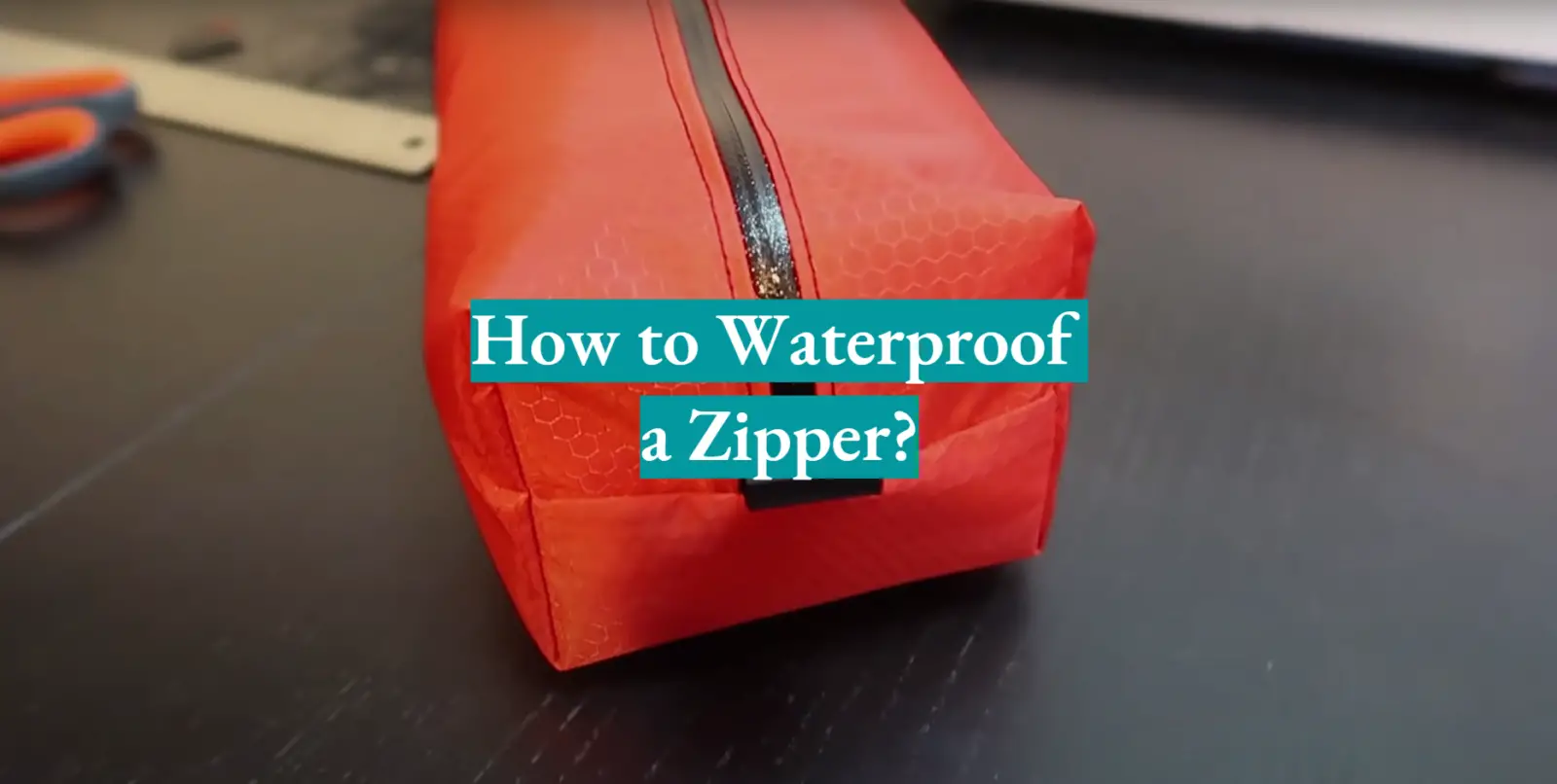

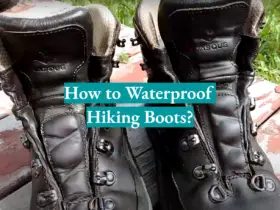

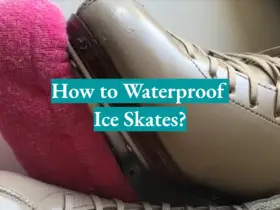
Leave a Reply